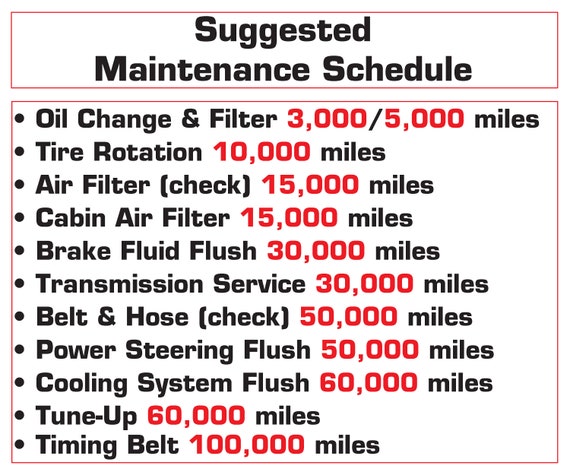When the thrill of getting a new ride wears off, you might start dwelling on sounds and quirks that may potentially bloom into big problems. That’s where warranties and service intervals come into play – they are the proverbial knights in shining armor in the world of auto ownership. But what do they really entail? Let’s take a joy ride through the nooks, crannies, and nitty-gritty of your car’s personal shield against malfunction and unpredicted repair costs. Prepare for unexpected insights – who knew vehicle maintenance could feel like a plot twist in an action-packed blockbuster?
Table of Contents
Understanding the Basics of Warranty

Warranties are often associated with the “peace of mind” that shields you from certain unforeseen expenses that may arise after purchasing a product such as a car, home appliance, or even a new house. So what exactly is a warranty? In simple terms, it’s a pledge by the manufacturer or service provider to repair or replace products if defects arise within a specified period of time. While warranties can be quite comprehensive, not everything is covered – so it’s critical to understand the specifics about what is and what isn’t.
A few common types of warranties include the “basic” or “limited” warranty which typically covers everything except certain parts like tires and brake pads. Then, you have “drivetrain” or “powertrain” warranties that extend coverage to major systems like the engine and transmission. Luxury brands often offer “bumper-to-bumper” warranties which come pretty close to covering everything under the sun but they too have limits. It is, therefore, invaluable to read and understand the fine print.
Remember, warranty contracts can be as diverse as the products they cover. Some are “pro rata,” meaning the coverage decreases over the warranty period. Others are “lifetime” warranties, which sound like they last forever, but actually only exist for as long as the original purchaser owns the product.
One more thing worth noting is that warranties come with certain obligations on your part too. Usually, this means you have to service the product at regular intervals using approved parts and procedures. Failure to do so could risk invalidating the warranty, leaving you to foot the bill when things go wrong.
Finally, don’t forget that not all repairs fall under warranty. Issues that stem from normal wear and tear or from your accident, misuse, or neglect generally won’t be covered. This includes maintenance items like oil changes, spark plug replacements, and other routine services.
In short, while warranties give you some protection against manufacturing defects, they are not an all-inclusive insurance policy. Therefore, as a savvy consumer, understanding the fine print can help you maximize the value of your warranty and potentially save you a sizable amount of money. Be sure to do your homework, ask lots of questions, and keep up with required maintenance. This way, you knit a safety net that helps protect your new purchase and your pocket from any unexpected monetary shocks.
Regular Service Intervals: An Overview

Regular service intervals are the unsung heroes of automobile upkeep. By adhering strictly to the manufacturer’s recommended schedule, you’re essentially helping your vehicle’s health – keeping it a well-oiled machine, so to speak.
Usually, the manufacturer will provide a service schedule in the vehicle’s handbook, outlining when specific maintenance tasks should be performed. These tasks range from oil changes and brake checks to more complex activities like belt replacements and spark plug inspections.
Take note, service intervals are typically measured in mileage increments or after a certain period, whichever comes first. So whether your vehicle hits 10,000 miles or a year has elapsed since your last service, it’s time to roll out the garage.
What you want to avoid is missing these intervals. It’s not just that the longer you wait the greater the potential damage; it’s that routine checks often catch smaller issues before they bloom into wallet-draining nightmares. Think of it as preventative medicine for your travel companion.
Interestingly, service intervals aren’t just about preservation. They’re also about performance. Regular upkeep ensures your vehicle is consistently performing at its optimal level. From fuel efficiency to handling, small tasks performed during regular service intervals keeps everything running smoothly.
However, the regularity of these intervals often varies by the make and model of your vehicle, and the driving conditions. For example, if you’re mostly making short trips, operating in particularly cold or hot environments, or hauling heavy loads, these conditions could necessitate more frequent servicing.
Given the direct correlation between vehicular health and regular service intervals, investing in scheduled maintenance isn’t an option; it’s a necessity well worth every penny and minute of your time.
Warranty vs Service Intervals: How They Interact

Most car owners are aware of the concept of warranty, which guarantees repair, replacement or maintenance in case certain conditions are met during a stipulated period. This offers a sense of protection and peace of mind to the vehicle owner. On the other hand, regular servicing of your vehicle is recommended for optimal performance and to extend the lifespan of your car. Now, how exactly does warranty interact with your regular service intervals?
Well, to start, warranties typically require a certain level of vehicle maintenance, including regular service intervals, to be valid. If these service requirements are not met, a warranty can be voided. For instance, if your warranty terms specify that oil changes are to be carried out every 5,000 miles and you decide to push this to 7,000 miles without consulting your dealer, this could potentially void your warranty. At their core, warranties are a form of insurance. Insurers want to minimize risk, and routine maintenance is a proven method of minimizing vehicle breakdowns and malfunctions.
However, your vehicle’s warranty doesn’t cover everything. It typically won’t cover wear and tear or consumables. This is where your service intervals come into play. While your warranty might cover major engine failures, service intervals primarily deal with preventative maintenance. This involves oil changes, brake pad replacement, and other wear and tear related issues. Sticking to these service intervals can help avoid major repairs which, while potentially covered by your warranty, can still be disruptive and inconvenient.
Another thing to note is, specific warranty coverages can come into effect after specific service tasks have been done. For example, some car makers might offer a longer powertrain warranty if specific maintenance tasks – like transmission fluid changes – are performed at certain intervals. Missing these service appointments may not void your entire warranty, but could make you ineligible for these additional coverages.
In conclusion, your warranty and your service intervals aren’t independent entities. They are intertwined and complement each other. It is crucial to adhere to prescribed service intervals to not only maintain your vehicle’s performance but also to ensure the validity of your warranty. Meanwhile, your warranty serves as a safety net to cover costly repairs resulting from unforeseen issues, provided you keep up with your vehicle’s maintenance needs. It’s a delicate balance of responsibility and reliance, but when done right, it ensures the long life and optimum performance of your vehicle.
Tips to Optimise Your Service Intervals and Warranty

To maximise the efficiency of your service intervals and warranty, there are several tips and strategies you can use. Firstly, always remember that regular service is vital to maintaining your vehicle and ensuring it stays within the company’s warranty. Avoiding your scheduled maintenance because your car seems to be running fine isn’t generally a smart decision. Instead, observing regular service schedules can help detect potential issues before they become larger, costly problems.
Make sure you get your vehicle serviced at an approved service centre. Your warranty could become void if services are performed by an unauthorised mechanic. Save all records and receipts of your vehicle’s service history. These may be required when making a warranty claim.
Understanding what your warranty includes and excludes is crucial. Many motorists neglect to grasp the specifics of their warranty, resulting in dissatisfaction when certain issues are not covered. If possible, equipping yourself with an extended warranty can provide added peace of mind. Remember, no warranty will cover damage due to neglect, racing, or accident-related repairs.
Maintenance scheduling is mainly driven by mileage. Ideally, your owner’s manual will provide an optimum schedule, also known as a maintenance plan. It identifies service intervals that suggest optimal times to examine or replace elements like the oil, filters, tires, belts, and other components. For electric vehicles, a large part of the maintenance revolves around the battery, brake system, and software updates.
Education is essential for optimising your service intervals and warranty. Know your car’s maintenance needs and understand the warranty. Taking these steps will not only increase your vehicle’s lifespan but might save you a significant amount of money down the road.
FAQs
When does my warranty really expire?
How often should I service my vehicle?
What happens if I miss my service intervals?
Conclusion
When it comes to warranties and service intervals, being informed is the best way to maximize your vehicle’s longevity and get your money’s worth. Remember, the manufacturer’s suggested maintenance schedule is designed with the health of your car in mind. Skipping them can void your warranty and lead to pricier fixes down the line. So, get familiar with your vehicle’s manual, keep up with routine maintenance, and don’t hesitate to ask questions at the dealership. A little foresight will save you a lot of hassle and cash.
